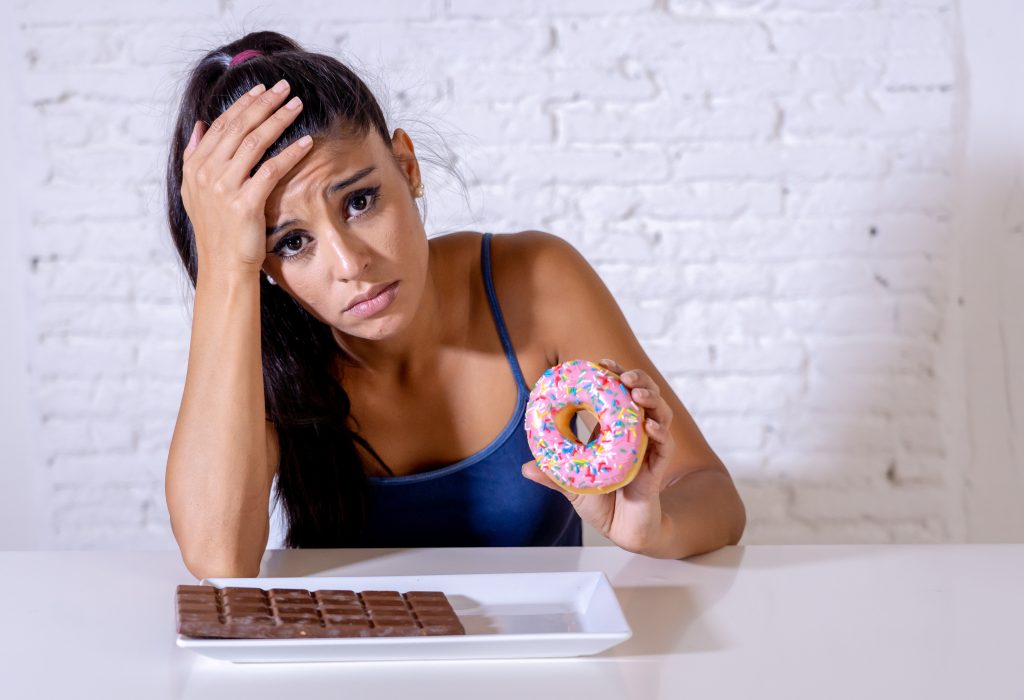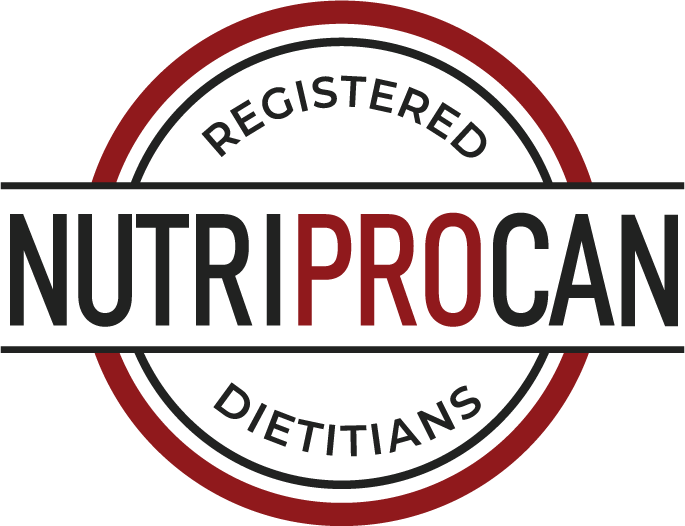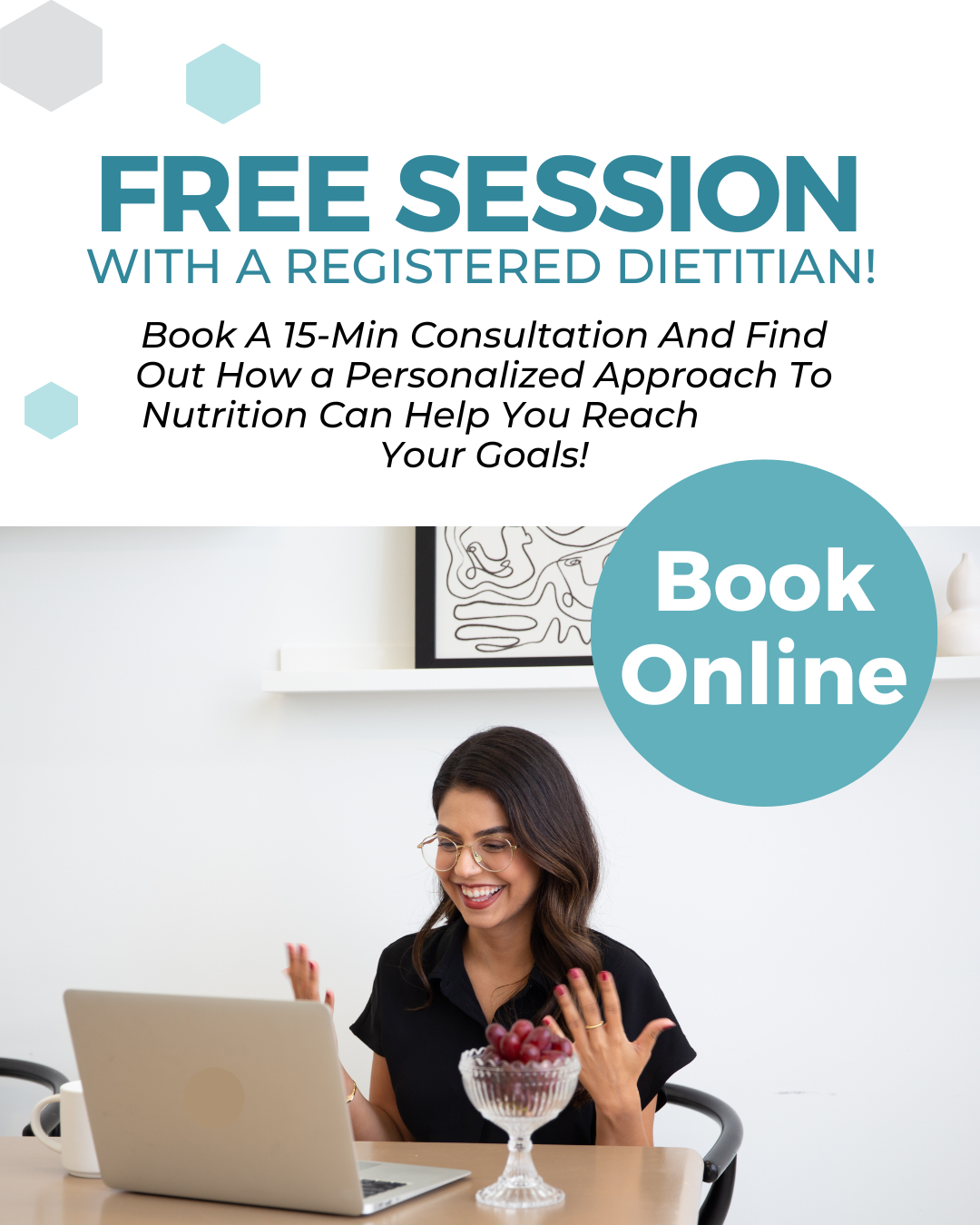By Nav Sharma, Registered Dietitian
Have you ever experienced that strong, powerfully intense urge to eat something sweet? Do you ever wonder why those feelings are so strong at times? As many of you know, sugar cravings are VERY REAL. They can be difficult to control – especially if you have some easily accessible sweet treats lying around like those chewy gummy bears your daughter brought home that “mysteriously disappeared”… Many of our clients (including us!) have expressed their struggles with sugar and the lack of control they feel once the sugar cravings take over.
So why do people even care to get control in the first place? Well, eating too much sugar can increase a person’s risk of many health problems, including weight gain, obesity, high blood pressure, type 2 diabetes, heart disease, liver disease, and tooth decay. Pretty important reasons, if you ask me!
Currently, Diabetes Canada recommends limiting free* sugar intake to less than 10% of total daily calorie (energy) intake for adults. This is approximately 50 grams (12 teaspoons) of free sugars consumption per day based on a 2000-calorie diet. The WHO takes this a step further and recommends that Canadians may benefit from limiting free sugar intake to less than 5% of total daily calorie intake based on a 2,000-calorie diet per day (approximately 26 g or 6 teaspoons).
*Free sugars are sugars that are removed from their original source and added to foods as a sweetener or as a preservative. There are so many different forms of ‘free sugars’ including cane juice, corn syrup, brown rice syrup, barley malt, agave nectar, and fruit juice concentrate.
Keep reading to learn facts about sugar cravings, how to determine if you have a sugar problem, and download a 13-step guide to gain control!
The Facts About Sugar Cravings
Okay, so here’s what we know about sugar cravings (other than how satisfying it can be when sugar touches our tongues):
- Blood sugars. Many sugar cravings stem from a blood sugar imbalance. When you consume sugar, your blood sugar spikes and your body releases insulin to lower it to a safer level. If the insulin brings your blood sugar level a bit too low, as often happens, your body craves foods that will raise it and increase your energy. You’re then basically on a blood sugar roller coaster – a ride that’s hard to jump off of! Skipping meals can also cause your blood sugars to dip, triggering your body to have something sweet to raise your levels quickly.
- Addictive. If you’re my client, you might remember me telling you this: Sugar has been shown to have an effect on the brain similar to that of an addictive drug. In fact, sometimes quickly removing it from your diet can cause withdrawal symptoms, including fatigue, depression, headaches and muscle aches. No wonder it isn’t easy to quit, but it’s also not impossible.
- Unbalanced meals. Unbalanced meals (meals that don’t include major food components like protein, healthy fats and fibres) can increase our hunger and cravings and, therefore, lead us to uncontrollably desire some delectable goodies.
- Stress. Rather than starting from your belly, some cravings actually start from your brain as a result of stress. Stress causes the hormone cortisol to release glucose from your liver, which in turn raises your blood sugar. We know fluctuations in blood sugar can cause cravings, so being constantly stressed is like asking for trouble. From an emotional perspective, sugar is a comfort food that provides a temporary, short-lived escape from a stressful situation – something we have to stay mindful of. Since this temporary escape doesn’t last long, our bodies begin to crave sugar again to reach that escape and the vicious cycle continues.
- Sleep. Adequate sleep plays an important role in your hunger and sugar cravings by balancing leptin, known as the satiety hormone, and ghrelin, known as the hunger hormone. Sleep deprivation can tip the hormonal balance away from satiety toward hunger and cravings. Poor sleep also can trigger excess cravings, including increased sugar consumption, as you seek energy to combat your fatigue.
- Sugar sources. Although considered healthier due to mineral or phytonutrient content, when it comes to cravings, “natural” forms, such as agave, coconut sugar, honey, maple syrup, and molasses are still forms of sugar that can fuel sugar cravings and feelings of addiction.
- Guilt. Giving in to sugar cravings can make us feel guilty and is one of the reasons it can be so hard to stick to a healthy diet.

How Do You Know If You Have a Sugar Problem?
If you are unsure whether you have a sugar problem or not, see if you can relate to any of these statements:
- I need to consume some form of sugar each morning (think sweetened coffee, juice, pastry, jam, etc.).
- In the afternoon I tend to be distracted by sugar cravings.
- I always have dessert after dinner.
- I have a secret stash (chocolate at my desk, candy in my purse or glove box, a hidden box of cookies in my pantry).
- When I’m sad, frustrated, stressed, bored or even happy, I look for sugar.
- Portion control is a challenge once I start eating sweet items.
- My sugar habits often leave me with a headache or feeling lethargic, depressed, anxious or feeling guilty.
If one or more of these statements apply to you, your relationship with sugar may need some attention.




Leave a Reply